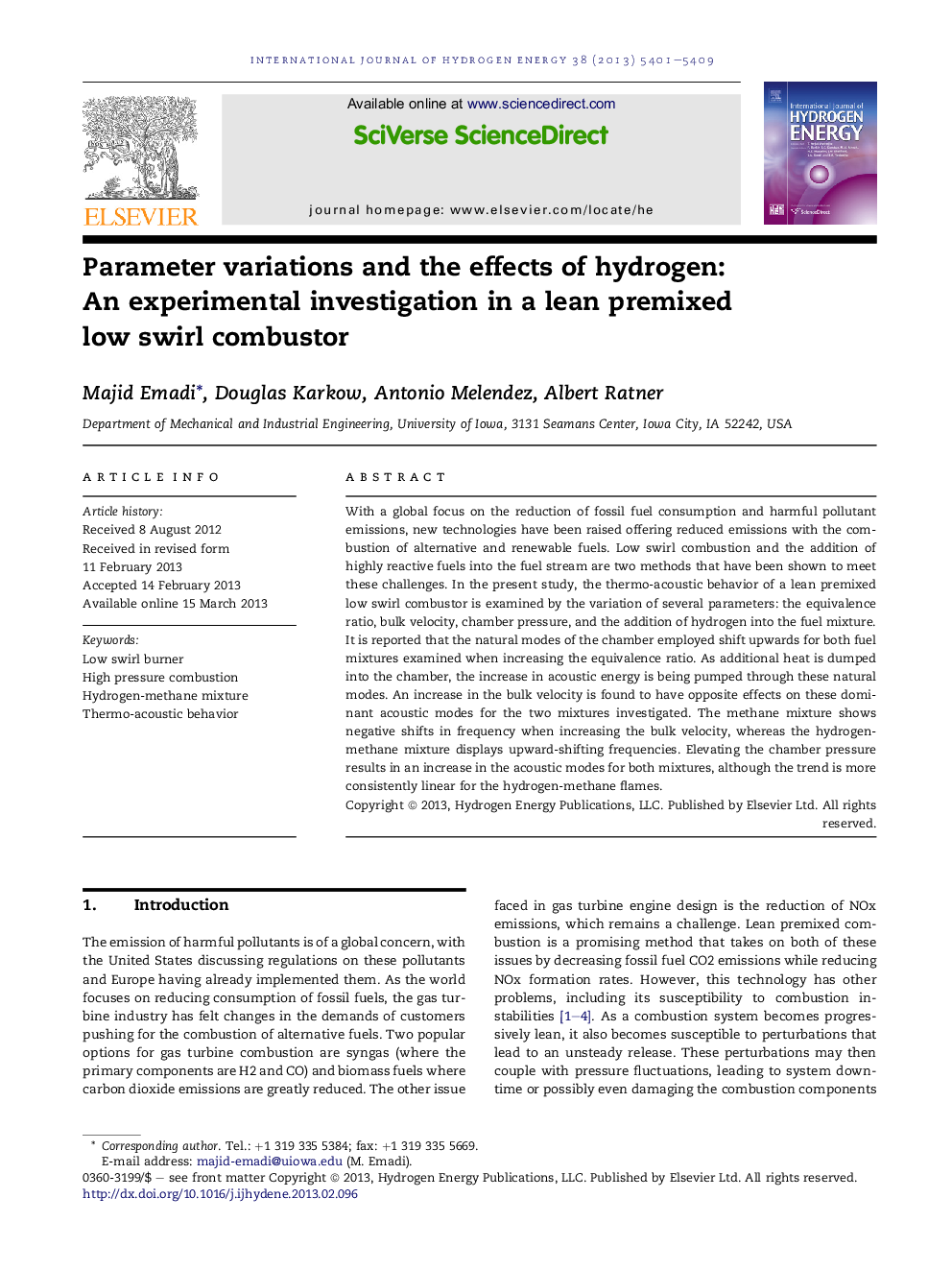| Article ID | Journal | Published Year | Pages | File Type |
|---|---|---|---|---|
| 1277728 | International Journal of Hydrogen Energy | 2013 | 9 Pages |
With a global focus on the reduction of fossil fuel consumption and harmful pollutant emissions, new technologies have been raised offering reduced emissions with the combustion of alternative and renewable fuels. Low swirl combustion and the addition of highly reactive fuels into the fuel stream are two methods that have been shown to meet these challenges. In the present study, the thermo-acoustic behavior of a lean premixed low swirl combustor is examined by the variation of several parameters: the equivalence ratio, bulk velocity, chamber pressure, and the addition of hydrogen into the fuel mixture. It is reported that the natural modes of the chamber employed shift upwards for both fuel mixtures examined when increasing the equivalence ratio. As additional heat is dumped into the chamber, the increase in acoustic energy is being pumped through these natural modes. An increase in the bulk velocity is found to have opposite effects on these dominant acoustic modes for the two mixtures investigated. The methane mixture shows negative shifts in frequency when increasing the bulk velocity, whereas the hydrogen-methane mixture displays upward-shifting frequencies. Elevating the chamber pressure results in an increase in the acoustic modes for both mixtures, although the trend is more consistently linear for the hydrogen-methane flames.
► Responses of variation of equivalence ratio and bulk velocity on dominant acoustic modes are examined. ► Responses of H2 addition and elevated pressures on dominant acoustic modes are examined. ► Acoustic modes are shifted upward as the equivalence ratio is increased. ► Changing bulk velocity and elevating pressure do not alter the acoustic modes significantly.
